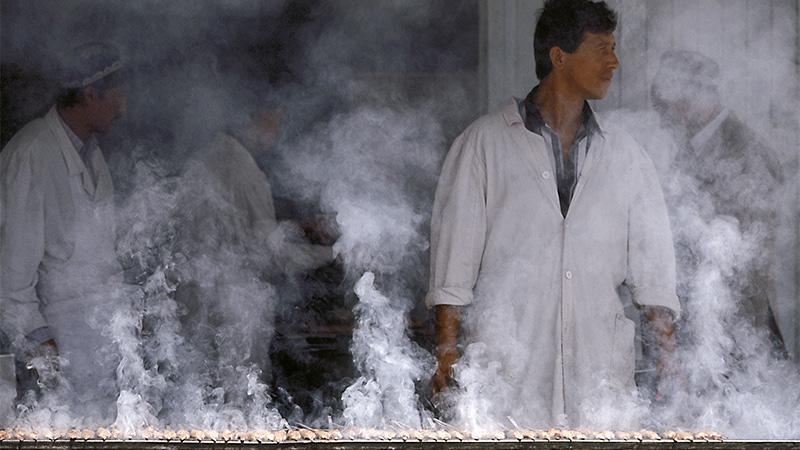Smooth Hues
Episode #4 of the course Master photographic composition by Tom Ang
Hello!
You may have noticed all the tips and ideas you’ve learned so far all apply to black-and-white images as well as to color ones.
Today, let’s look at one of the many ways we can use color in composing images.
Distinction through Subtlety
With today’s digital cameras, it’s very easy to make strikingly colorful images. But too much is not always a good thing, especially with color. One of the easiest ways you can distinguish your photography from others is through the subtle use of color. Restrained color palettes are a reliable sign of a refined eye.
Try this:
• As a little project, concentrate on one range of colors at a time. Choose a pastel shade as that’s easy to handle: creams, pale blues, or flesh tones. Look for images containing primarily that one color. It doesn’t matter if a few flecks of other, contrasting colors also appear in your shots. In fact, you will find yourself working with those contrasting patches.
• Work on cloudy or overcast days to avoid complications with shadows: Keep the tones soft and shadows soft.
• As you gain experience, try working under different types of lighting.
In the photo of the barbecue stall smoking up, all the tones are whites and creams apart from the flesh tones. Yet all the smudging of the smoke obscures details and helps hold the image together.

Power of Monochrome
Monochrome images have a limited range of colors dominating. They work really well for showing off textures such as in stonework or wood grain.
• As your skill improves, add life and action to an attractive composition of colors, textures, and shapes. The random element—the thing you can’t predict—will give power and energy to your composition.
In the shot of pigeons, the light and textures of the stonework are lovely. But it’s the birds that really bring life to the image.
Waiting for Resolution
Both yesterday and today, I asked you to wait for something to enter the picture frame to bring it alive. Waiting is a key part of street and documentary photography and essential to travel photography too. Here are a few techniques for successful waits.
• Be patient! if you’re not used to being still for even a minute, five minutes’ wait may be a torture. I often stand in position for half an hour! Build up your endurance bit by bit. It’ll be worth it!
• Follow your instincts! if you have a nagging feeling something will happen, then hang on! But beware of too easily feeling, “Nah! It’s not worth it.”
• Stay awake! This applies to you and your camera. Keep it on! You may get only a fraction of a second’s notice. And it’ll be really irritating to miss a shot because you were polishing your sunglasses!
We’re really building up your photo-composition skills now! You’re now able to work with shapes, patterns, random events, and monochrome images. Tomorrow, we attend to one of the most important elements.
It’s been lurking in the background in every image so far, but we’ll unveil its full power!
Till tomorrow!
Tom
Recommended resource
Luigi Ghirri: A master of the image with limited color palette, a close and affectionate observer of life.
Recommended book
Share with friends

